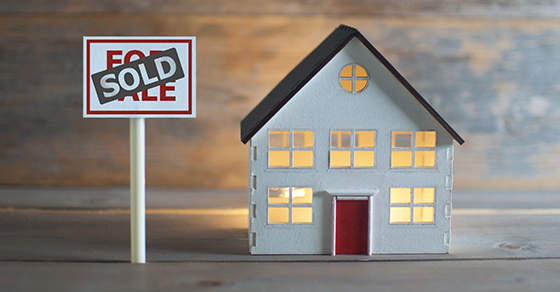
If you sell your home, you might be able to pocket up to a half million dollars in gain from the sale without owing any federal income tax. How? By claiming the home sale gain exclusion. But various rules and limits apply, so it’s important to understand the ins and outs of this tax break.
If you qualify, you can exclude up to $250,000 of gain — $500,000 if you’re married filing jointly — on the sale of your home from your income. The amount of gain is the difference between the sales price and your adjusted basis. Typically, adjusted basis is the amount paid for the home plus the cost of any home improvements. Therefore, it’s especially important to keep detailed records of improvements that could increase your basis.
To qualify for the exclusion, you must have owned and used the home as your principal residence for at least two of the five years prior to the sale. There’s no definitive definition of “principal residence” in the tax code. Generally, your principal residence is the place where you hang your hat most of the time and where you’ve established legal residency for other purposes.
The exclusion can’t be claimed for a second home. This may warrant a change in your living habits. For instance, if you spend seven months at a winter home in a warm climate and five months at a summer home, the winter home is considered to be your principal residence. So if you want to sell your summer home, you may first want to spend enough additional time there that it can qualify as your principal residence.
Here are some other key points about the home sale gain exclusion:
If the home has been used for business rental or use — including use of a home office for which you’ve claimed a tax deduction — you must recapture depreciation deductions attributable to the period after May 6, 1997. The recaptured income is taxable at a maximum rate of 25%.
Even if you don’t meet the two-out-of-five-year rule, you may be eligible for a partial exclusion if you sell the home due to certain unforeseen circumstances, such as:
If a specific exception doesn’t apply, the IRS will examine the facts and circumstances of the case. The partial exclusion is equal to the available exclusion amount ($250,000 or $500,000, depending on your filing status) multiplied by the percentage of time for which you met the requirements.
Maximizing The Benefits
The home sale gain exclusion is valuable enough that taking the steps necessary to ensure you meet the requirements can be well worth the effort. If you’re unsure whether your circumstances will qualify you for this tax break or what you can do to make the most of it, please contact us.
© 2024
Receive Free financial tips & Tax Alerts!
"*" indicates required fields
As higher education costs continue to rise, you may be concerned about how to save and pay for college. Fortunately, several tools and strategies offered in the U.S. tax code…
When selling business assets, understanding the tax implications is crucial. One area to focus on is Section 1231 of the Internal Revenue Code, which governs the treatment of gains and…
Saving for retirement is a crucial financial goal and a 401(k) plan is one of the most effective tools for achieving it. If your employer offers a 401(k) or Roth…